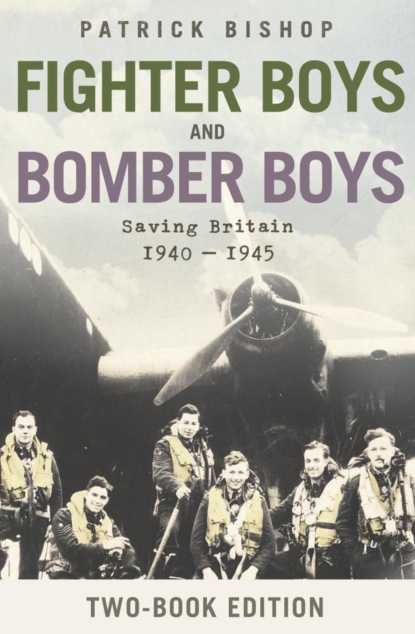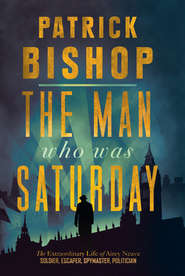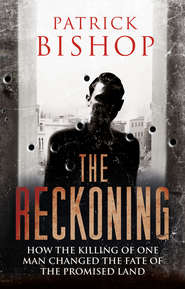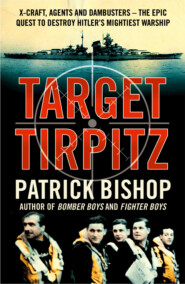По всем вопросам обращайтесь на: info@litportal.ru
(©) 2003-2024.
✖
Fighter Boys and Bomber Boys: Saving Britain 1940-1945
Настройки чтения
Размер шрифта
Высота строк
Поля
(#litres_trial_promo)
What remained of the eight reinforcement flights prepared to withdraw, most of them with only half the aircraft they had arrived with. On 20 May the Air Component squadrons attached to the BEF began to pack up. That evening 87 Squadron set off from Lille to Merville, the thirty-minute journey taking hours because of the blackout and roads clogged with troops and refugees. Roland Beamont described a ‘great mass…all pouring westwards…pushing perambulators, bicycles loaded up with blankets and pots and pans…As we tried to get through them in clearly marked RAF vehicles there was a great deal of hostility. I think they felt that here were the British running away.’
(#litres_trial_promo)
Dennis David flew to their new airfield to discover that ‘accommodation was nil in the village, and we…were thankful to have clean straw to sleep on in a pigsty’. As the morning passed and the traffic outside the airfield was joined by the same retreating Allied troops the squadron had seen at Lille, anxiety grew that they would never get away. All the rumours were bad ones. A young French officer told them ‘that Arras had fallen and that the Germans were advancing to the coast. Unbelievable! A battery of 75s stopped at our dispersal point and a harassed capitaine told us how Gamelin had been executed by the Paris mob and that the Germans had reached Abbeville [well to the south].’
(#litres_trial_promo) Orders were given for the pilots to carry out strafing attacks on German troops on the road between Cambrai and Arras until troop carriers arrived to evacuate the ground crews, when they would switch to escorting them ‘home to England’. These last words, the squadron diary noted, had a profound effect. ‘An entirely new atmosphere was noticeable immediately the officers and men read that. A mixed feeling of regret at leaving hospitable France and an unpleasant feeling that should anything happen to the troop carriers or the Hurricanes we should be left very much alone in the world.’
By the following day they were home. Dennis David, who had been shot up in a strafing run, crash-landed but was evacuated in a passenger plane. After months looking down on the plains of northern France he was struck by ‘how small and green the fields of Kent looked’. He went home to Surbiton, where his mother sent him to bed. He ‘slept without moving for thirty-six hours. She became quite concerned and actually called the doctor, who said I was completely exhausted and should just be left to sleep.’
(#litres_trial_promo) The sister squadron, 85, also made it back. ‘I came home last night,’ Denis Wissler scrawled in pencil in his diary. ‘Bath, bed, booze.’
Bull Halahan decided that his men had now had enough and asked permission for the longest serving pilots to withdraw. The core of the squadron, who had been in France from the first days, left together; including the Bull himself, Johnny Walker, Prosser Hanks, Killy Kilmartin, Bill Stratton, Pussy Palmer, Boy Mould and Frank Soper. Rennie Albonico, another of the originals, was not with them, having been shot down and taken prisoner on 21 May. Nor was Paul Richey. On the last big day of fighting, 19 May, he had attacked a formation of Heinkels, and after destroying one was caught in return fire. He was hit in the neck by an armour-piercing bullet and temporarily paralysed, only regaining the power in his arms when his Hurricane was 2,000 feet up and locked in a vertical dive. He was found by the French and moved erratically westwards to end up in the American Hospital in the Paris suburb of Neuilly.
Billy Drake also passed through Paris after being collected from hospital in Chartres by an American girlfriend called Helen. Lacking uniform or identity papers, he was again taken for a German at a French roadblock and feared he was going to be shot as a spy until Helen persuaded them to let him go. They went to the Crillon, where she handed over her Buick, its tank miraculously full of petrol, and told him to head for Le Mans, where the British were regrouping. ‘The streets were crowded with refugees,’ he said, ‘and much worse, with soldiers without their rifles, just trudging. They’d had it. It was the most depressing thing I’ve seen in my life.’
(#litres_trial_promo) At Le Mans there was an emotional reunion with the squadron members who had stayed behind.
Richey, too, eventually joined them after recuperating in Paris, savouring the last days of freedom the city would know for four years. One day, walking down the Champs-Élysées, he came across Cobber Kain sitting at a pavement café with a Daily Express journalist, Noel Monks. Kain had chosen to help with the re-forming of 73 Squadron, after those who remained of the surviving pilots returned to England, and was due back himself in a few days. He was young enough to still have acne, but his spirit was frayed. Richey ‘noticed that he was nervous and preoccupied and kept breaking matches savagely in one hand while he glowered into the middle distance’.
(#litres_trial_promo)
The following day Kain took off from the squadron base at Echemines, south-west of Paris, and started to perform rolls perilously close to the ground. Among those at the aerodrome was Sergeant Maurice Leng, a twenty-seven-year-old Londoner who was one of the first of the RAFVR pilots to be posted to a fighter unit to replace squadron casualties. ‘He’d taken off in…the last original surviving Hurricane of 73 Squadron with a fixed-pitch, two-bladed wooden airscrew,’ he said later. ‘He took off and came across the aerodrome, did a couple of flick rolls and hit the deck. That was it.’ The sympathy of the newcomers, who had hardly known him, was muted. ‘We all said, “How sad,” but we all said, “How stupid.”’
(#litres_trial_promo)
The judgement could have served for the whole air campaign. It petered out in a series of withdrawals westwards in ever deepening chaos. Nos. 1 and 73 Squadrons, two of the first four squadrons in, were to be the last out, together with 501, which had been in France since the start of the blitzkrieg, and 242 and 17 Squadrons, which were sent out early in June. No. 1 Squadron was now transformed, with a new commander, Squadron Leader David Pemberton, and an almost entirely new set of pilots. Pat Hancock, one of the replacement pilots, remembered the remaining weeks as ‘only retreat, anxiety and lack of knowledge as to what was going on. Communications were almost non-existent. Fighter control, as such, had vanished.’
(#litres_trial_promo) In the first two weeks of June the unit moved four times, in the end taking the initiative to shift itself when it was impossible to contact wing headquarters to obtain orders. They finally left on 17 June. One party departed by ship, boarding two dirty half-loaded colliers at La Rochelle. Another flew from St Nazaire. The squadron had been helping 73 and 242 Squadrons to maintain a continuous patrol over the port to cover the embarkation of the RAF and the remnants of the British army in France. They were unable to prevent the last tragedy of the campaign, the sinking of the Lancastria, which went down with the loss of 5,000 lives when a German bomb sailed flukily through an open hatch. Pat Hancock chased after one of the raiders ‘for a hell of a way, firing at it but with no success’. Circling over, he saw the victims struggling in the water and threw down his Mae West life-jacket.
No. 17 Squadron was also sent to cover the evacuation, and set up base in tents on the racetrack at Le Mans on 8 June. The same day, Denis Wissler, back with 85 Squadron after a forty-eight-hour leave, was summoned by his commanding officer, Peter Townsend, who had taken over the squadron two weeks before, and told that ‘17 Squadron had wired and asked for two operational pilots and that he was very sorry but I would have to go, and that at once’. Wissler had only been with 85 Squadron for six weeks, but his first impression on joining was that ‘the mob seem damn nice’, and he had grown very fond of them. There were only two hours to say goodbye before he left for Kenley. He stopped on the way in London for a solitary, melancholy dinner at the Trocadero, where he ‘really got completely plastered and was put to bed by the wing commander’. The same kindly officer woke him up at 3.30 a.m. with some Alka-Seltzer, lent him his bath robe and sent him for a cold shower before he took off.
Wissler left with Count Manfred Czernin, who had been with him in 85 Squadron. Czernin was twenty-seven, born in Berlin, where his Austrian diplomat father was en poste. His mother, though, was English, the daughter of Lord Grimthorpe, the polymath who designed Big Ben, and he had been to Oundle public school. There was none the less more than a dash of Mitteleuropa in his manner, which made him the object of some teasing. He joined the RAF in 1935 on a short-service commission after a stint farming tobacco in Rhodesia, and served as a bomber pilot before joining the reserve. Unlike Wissler, he had already been in action several times in France and claimed to have shot down four Germans. The pair managed to get lost several times on the way to Le Mans, taking twelve hours over a one-hour journey. The squadron then spent several days patrolling over Rouen and Le Havre, both towns obscured by columns of black smoke coiling up from burning oil tanks. On 12 June Wissler at last had his first taste of fighting when the squadron spotted three Heinkels bombing troopships off Le Havre and attacked. He opened fire on one of the bombers and saw smoke coming from the starboard engine, but modestly did not claim to have shot it down. Czernin, however, fired at another Heinkel in cloud and claimed a ‘conclusive casualty’. On a later patrol Wissler had another new and unwelcome experience: coming under heavy ground fire. ‘It was most terrifying,’ he reported candidly in his diary that evening.
By now the evacuation was almost complete. The squadron returned to Le Mans after a patrol on the morning of Saturday, 12 June, to find the Naafi had gone leaving behind huge quantities of cigarettes and whisky, to which everyone helped themselves. The army had abandoned a batch of Harley-Davidson motor bikes. Pilots and ground staff took the opportunity to ride circuits round the famous track. The same day they moved to Dinard. On 17 June the pilots were at readiness all morning and broke off to eat at a local hotel. Members of a French squadron based at Dinard aerodrome were also there. Peter Dawbarn, a nineteen-year-old pilot officer with 17 Squadron, was among the English pilots who sat down to lunch. There was a radio in a corner of the dining room. When the news came on everyone stopped eating to listen. When the announcement of the capitulation followed there was silence. Then, ‘they all burst into tears’.
(#litres_trial_promo)
The newcomers had formed a low opinion of the French. Pilots’ attitudes towards their allies differed, depending on when they joined the battle. Many veterans of the phoney war had enjoyed the company of their spirited fellow officers in the neighbouring escadrilles, even if they had not found them particularly supportive or even visible during the crucial phase of the Battle of France. No. 1 Squadron had a much-loved Frenchman attached to it as interpreter, Jean ‘Moses’ Demozay, who was to escape to Britain in an abandoned Bristol Bombay troop carrier and fight bravely and effectively for the RAF and the Free French for the rest of the war. The reinforcement flights and squadrons rarely saw the French. The few recorded encounters were not happy ones. Flight Lieutenant Fred Rosier of 229 Squadron put down at an airfield near Lille, after being nearly shot down in a battle, ‘to find the French were there, with brand-new American aeroplanes, fighters, and they were not flying. They were quite friendly, but I was livid…They were not participating in the battle at all.’
(#litres_trial_promo)
The French the replacement pilots saw appeared demoralized and apathetic. Peter Dawbarn and the 17 Squadron pilots had come across French fighter pilots on previous trips to Dinard, which they used as a base for patrolling, ‘but they never took off as far as I know. We kept taking off, they didn’t.’ The locals could also seem treacherous. The squadron was convinced that traitors were reporting their movements to the Germans. ‘The fifth column is operating here we are sure as Morse code starts every time we take off,’ wrote Wissler. The 17 Squadron Hurricanes left from Dinard, fuselages packed with cigarettes and alcohol, and landed at Jersey, where they celebrated their escape in Fighter Boy style with a party. When they left the following day, one Hurricane carried a passenger, a young woman who made the brief journey to freedom with the pilot perched on her lap.
(#litres_trial_promo)
Most of the Hurricanes that went to France never came back. Given the tight margins Fighter Command was working within, the campaign had been ruinously expensive in machines. Of the 452 fighters sent out, only 66 returned when the main force withdrew. Of the missing 386, German fighters and flak accounted for only 208. The rest were abandoned as unserviceable. This was no reflection on the ground crews, who worked continuously while being regularly bombed and strafed, with only a few hours’ sleep in tent or field to sustain them before going back on shift. All but intact aeroplanes suffering only light damage had to be set on fire because there were no spares, or the chaotic conditions made repairs impossible. The normally genial tone of No. 1 Squadron diary faltered when it came to describing the waste. ‘It has been most noticeable that on a patrol yielding no apparent results as many as two or three aircraft out of six may be struck by shrapnel and on return to aerodrome it has been found necessary to write off all three as u/s, due to lack of proper servicing and maintenance facilities…Wastage has so far been in the neighbourhood of thirty-eight, only ten of which have actually crashed. Apparently we in France are the poor relations.’
(#litres_trial_promo)
The pilots of Fighter Command could feel proud of their performance in France. Churchill had claimed that they were ‘clawing down two or three’ Germans for every British aeroplane lost. It was a vast exaggeration. The Hurricane squadrons reckoned themselves to have definitely shot down 499 bombers and fighters. The true figure was lower but it was at least 299. But with losses of 208 on their own side, it still left the RAF pilots well in the lead. Their success was their own. They were dedicated and aggressive and they made the most of their excellent machines. What they lacked was an effective early-warning system, or any proper control or direction from the ground. The pilots fought using tactics they invented for themselves for objectives that were never explained, if they were ever understood. Given these handicaps, the cost in lives looked relatively low. Altogether fifty-six pilots were killed in the twelve days between 10 and 21 May, and thirty-six wounded, with eighteen taken prisoner. But such losses could not possibly be borne over a long period, and as soon as this battle ended, a new one was beginning.
8 Dunkirk (#ulink_dbb0ca0f-4194-530d-a054-88d1c3b58812)
At Dunkirk some 500,000 British and French soldiers were now penned in, the sea at their backs, awaiting capture or annihilation. The job of finishing them off was given to the bombers and fighters of the Luftwaffe. Goering had proposed the idea. Hitler accepted it, apparently wishing to spare his army for the next stage of the French campaign.
The RAF was given the task of protecting the exhausted lines of soldiers, zig-zagging across the grey North Sea sands waiting to be rescued. This was the heaviest responsibility the air force had yet had to face. The troops were appallingly exposed. Defending them meant not only mounting continuous patrols over Dunkirk port and the beaches on either side. To be effective the fighters would also have to push inland to try to knock down the bombers before they could drop their loads.
Once again, they would be operating at a significant disadvantage in numbers. Despite the losses sustained in the blitzkrieg, the Germans still had 300 bombers and could draw on 550 fighters to protect them. After the depredations of the Battle of France, Air Vice-Marshal Keith Park, whose 11 Group faced Dunkirk, had only 200 fighters at his immediate disposal. The mission, though, had the virtue of clarity and purpose. The pilots knew what they were supposed to do and why they were doing it. The stoicism of the infantrymen as they waited patiently among the bomb bursts was profoundly affecting to the men flying over them, however little this was appreciated on the ground.
The burden of the fighting was to be borne by the squadrons based around London, which would be fully engaged for the first time. Dowding also decided that the time had come to throw his precious Spitfires into the battle. The 11 Group pilots watched the last, painful phase of the BEF’s campaign in France with anticipation. To some it seemed to be less of a disaster than an opportunity. ‘At Hornchurch,’ wrote Brian Kingcome, ‘the taste of war at last began to tingle our palates.’
(#litres_trial_promo) ‘Operation Dynamo’, as the evacuation was code-named, began on the evening of 26 May when a vast flotilla of yachts, pleasure boats, fishing smacks, sailing barges, motor cruisers and dinghies joined more conventional craft in carrying the soldiers back across the Channel.
There had already been some preliminary skirmishing during the previous ten days. The Hornchurch pilots on the evening of 15 May were called to the billiards room of the officers mess for a briefing. There was no briefing room at the base. As Al Deere pointed out, ‘there was no need for any; our operations were purely defensive and aircraft were usually launched into the air at a moment’s notice, the pilots having only the vaguest idea of what to expect’.
(#litres_trial_promo) Now they were informed that they would be going on the offensive, roaming over the French and Belgian coasts to seek out the Luftwaffe.
When the order came to start patrolling, there was competition among the 54 Squadron pilots as to who would go off first. The honour – for this was how it was seen – went to the twelve most experienced pilots. Al Deere described the excitement, after bumping over the grass at Hornchurch and climbing to 15,000 feet, of crossing the French coast: ‘There was a hum in the earphones as the CO’s voice crackled over the air, “Hornet squadron, battle formation, battle formation, GO.” Symmetrically, like the fingers of an opening hand, the sections spread outwards. As my eyes scanned the empty skies I was conscious of a feeling of exhilaration and tenseness, akin to that experienced before an important sporting event. There was no feeling of fear…’ When nothing happened, elation soon evaporated. When the squadron returned, the other pilots crowded round to hear about the first real taste of action. Colin Gray, a fellow New Zealander, asked Deere what it had felt like, ‘knowing that at any minute a Hun might pop up and take a pot at you?’ Deere reported that ‘at first I was tingling all over with excitement but when after a time nothing happened I was damn bored’.
(#litres_trial_promo)
It was Johnny Allen, a quiet member of the squadron who stood out because of his strong religious convictions, who scored first, shooting down a Ju 88. Deere’s turn came on 23 May. While eating breakfast in the mess that morning, he was called to the phone to speak to his flight commander, Flight Lieutenant James ‘Prof Leathart, so called because he had a degree in electrical engineering. Leathart had just come from a meeting with the station commander, Wing Commander ‘Boy’ Bouchier, who had learned that the CO of 74 Squadron, Squadron Leader White, had been shot at while patrolling across the Channel and forced down at Calais-Marcq aerodrome. ‘Drogo’ White was an example of the RAF’s fundamentally meritocratic nature. He had started out as a Halton apprentice and been selected for Cranwell, where he won the Sword of Honour. He was regarded as the finest shot in the air force, capable of scoring eighty hits out of a hundred on a towed drogue target, when the average was twenty. None of this had saved him from being shot down on his first sortie, and by a Henschel 126, a relatively slow-moving reconnaissance plane.
Before landing he radioed Johnny Freeborn, who was flying with him, asking him to tell his wife that he was unhurt and would soon be home. This optimistic prediction came true sooner than he could have dared to hope. Bouchier asked Leathart to fly over in a two-seater Miles Master trainer, keep the engine running while White hopped in, then return at sea-level. It sounded to Deere, who with Johnny Allen was asked to fly escort, ‘a piece of cake’. They reached Calais without any trouble. Deere sent Allen up to stand guard at 8,000 feet, where Germans might be lurking in the broken cloud. The bright yellow Master landed and taxied over to a hangar, where White was presumed to be waiting. Then Deere heard ‘an excited yell from the usually placid Johnny’. Allen had seen a dozen Me 109s heading for the airfield. He attacked, and found himself in the middle of a frantic mêlée, shooting and being shot at.
Deere dropped down to try and alert the Master, which had no R/T, by waggling his wings. As he did so a 109 flashed across his path. He latched on to it and reefed his Spitfire hard over in an attempt to turn inside the Me 109, the crucial manoeuvre in air fighting. If the chasing pilot succeeded in turning tighter, getting inside his opponent, he had the chance to fire a deflection burst, aimed in front for the enemy to fly into. If he failed, the target was always a little ahead, leaving the tracer twinkling harmlessly in his wake. Deere turned inside. He was preparing to fire when Allen’s voice again filled his earphones, calling for help. Deere asked Allen to ‘hang on while I kill this bastard’, and stayed clamped into the turn. Then, ‘in a last desperate attempt to avoid my fire, the Hun pilot straightened from his turn and pulled vertically upwards, thus writing his own death warrant. He presented me with a perfect no-deflection shot from dead below and I made no mistake. Smoke began to pour from his engine as the aircraft, now at the top of its climb, heeled slowly over in an uncontrolled stall and plunged vertically into the water’s edge from about 3,000 feet.’
Now he went to look for Allen. As he climbed, he was seen by two 109s, which swung round steeply and started after him. Again Deere found that he could comfortably turn inside his pursuers, so that very quickly the roles were reversed and he was chasing them. Deere opened fire on the second 109, causing ‘bits to fly off’. Then he and the lead 109 went into an extended dogfight, chasing each other round at high speeds in tighter and tighter circles. Before the end Deere ran out of ammunition, but for reasons he could not later explain he continued the engagement until the German abruptly straightened out and headed east for home. Buzzing with adrenaline, Deere and Allen, whose Spitfire was by now ventilated with bullet holes, did the same. Deere indulged himself with a victory roll over the aerodrome as they came in.
This encounter was the first time a Spitfire had gone up against a Messerschmitt and pilots and ground crew were hungry for details. Deere’s account was corroborated by ‘Prof Leathart, who had with White watched the combat from a ditch before they made their escape as soon as the sky was clear. Deere was excited and relieved. It seemed that one of the great questions that the fighter pilots, and those who directed them, had been asking themselves since the start of the war had been settled. Deere believed that as a result of his prolonged fight with the second 109 he had been able to assess practically the relative performance of the two aircraft. The experience of the Hurricanes in France, and the tests carried out on the Me 109 that had fallen into Allied hands, had concluded that the Messerschmitt could out-climb the Spitfire up to 20,000 feet, and always out-dive it, but was less agile at all altitudes. Deere agreed about the dive. The Messerschmitts, unlike the British fighters, had fuel injection, which meant they did not miss a beat at the moment of zero gravity that preceded a rapid descent. That aside, ‘the Spitfire was superior in most other fields, and like the Hurricane, vastly more manoeuvrable.’
(#litres_trial_promo) The Spitfire’s climbing performance had been significantly improved by the advent of the Rotol constant-speed airscrew.
Later that day there was to be another formative experience for the squadron. That afternoon it took off on cross-Channel patrol and ran into a formation of bombers silhouetted above in the clear sky, heading for Dunkirk. After climbing above, unnoticed, and gaining the maximum tactical advantage, Leathart, who was leading, ordered a No. 5 attack. The four sections of three fanned out into echelon formation, each one tucked into a neat inverted V-shaped ‘vic’ slanting across the sky in a shallow diagonal, each pilot selecting his target. The flying discipline would have delighted their pre-war instructors. Then a panicked voice on the R/T shouted: ‘Christ, Messerschmitts – Break!’ The squadron instantly ‘split in all directions, all thoughts of blazing enemy bombers momentarily ousted by the desire to survive’.
In the tumbling dogfight that followed, the 54 Squadron pilots claimed to have destroyed eight of the attacking Messerschmitts, but unfortunately no bombers, which were their primary targets. Despite this success, the encounter set off intense discussion of the value of the tactics they had been taught. The criticism was led by George Gribble, a ‘very English, very good-looking’ twenty-year-old short-service entrant. In Deere’s admiring opinion, he ‘epitomized the product of the public school; young yet mature, carefree yet serious when the situation required it, and above all possessing a courageous gaity’. Gribble told Leathart that ‘everybody was so damn busy making certain he got into the right position in the formation that we were very nearly all shot down for our pains’. Leathart, who was shortly to take over command, did not argue. He promised that henceforth there would be no more Fighter Area Attacks.
(#litres_trial_promo)
These cross-Channel clashes taught valuable lessons to the 11 Group squadrons. They provided a demonstration of the startling reality of air fighting, but allowed the pilots an opportunity to recover and digest their experiences. Previously no one had known what to expect. During the first days of the Battle of France, 32 Squadron, flying from Biggin Hill, had barely seen the enemy. Michael Crossley noted one day’s non-events with typical candour and idiosyncratic punctuation in the squadron diary. ‘All set off to France, land at Abbeville, refuel, hear dreadful stories, get very frightened, do a patrol, see nothing, feel better, do another, see nothing, feel much better, return to Biggin Hill, feel grand.’
(#litres_trial_promo)
Mike Crossley was over six feet tall, with jug ears, dark, smiling eyes and a slightly caddish moustache. Between leaving Eton and joining the RAF he had studied aeronautical engineering, worked as an assistant director at Elstree film studios and signed on as an apprentice with De Havilland. He was a natural musician who played the guitar and trumpet brilliantly and had a jokey manner that sometimes appeared to border on the facetious. Crossley, though, could be serious enough when he had to be. Shortly after writing the diary entry he became the first pilot in the squadron to shoot down an Me 109, with a perfect deflection shot, and was to destroy three more in the next four days. Pete Brothers also shot down an Me 109 in the same encounter. In the following week the squadron was in action almost daily, flying offensive patrols and escorting bomber raids, using each sortie to add to its stock of collective and individual knowledge and increase its effectiveness and its members’ chances of survival. Its pilots’ capacity to learn meant that 32 Squadron remained intact as a fighting force for the next three months and was not withdrawn from the line until the end of August.
Squadron commanders and pilots drew their own conclusions from their experiences and acted on them without waiting to seek approval from above. The nature of the fighting meant that advice or direction from superiors not involved in daily combat carried little authority. To their credit, Dowding and the best of his senior commanders accepted that their own understanding of what was happening could well be inferior to that of even the most junior front-line pilot. They sought their opinions, listened to what they had to say and, when needed, took action.











